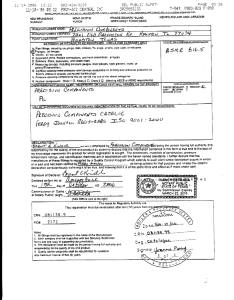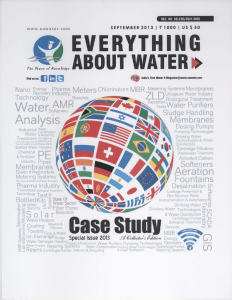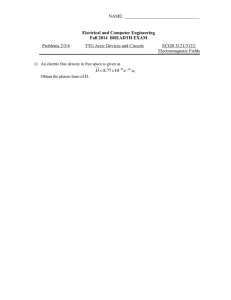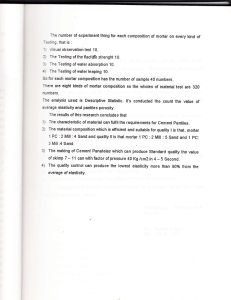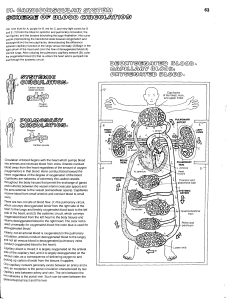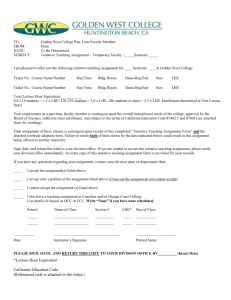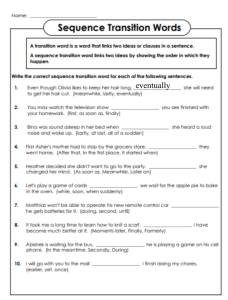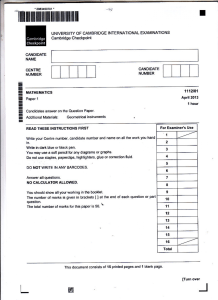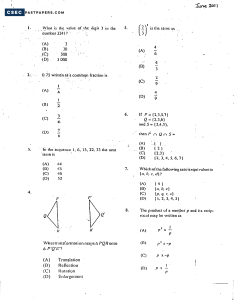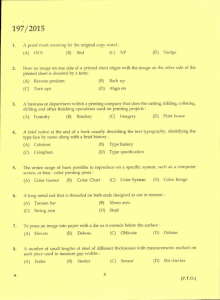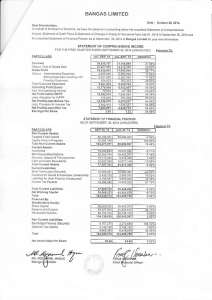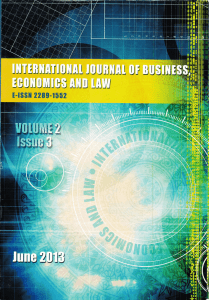Euler`s constant and natural numbers
advertisement
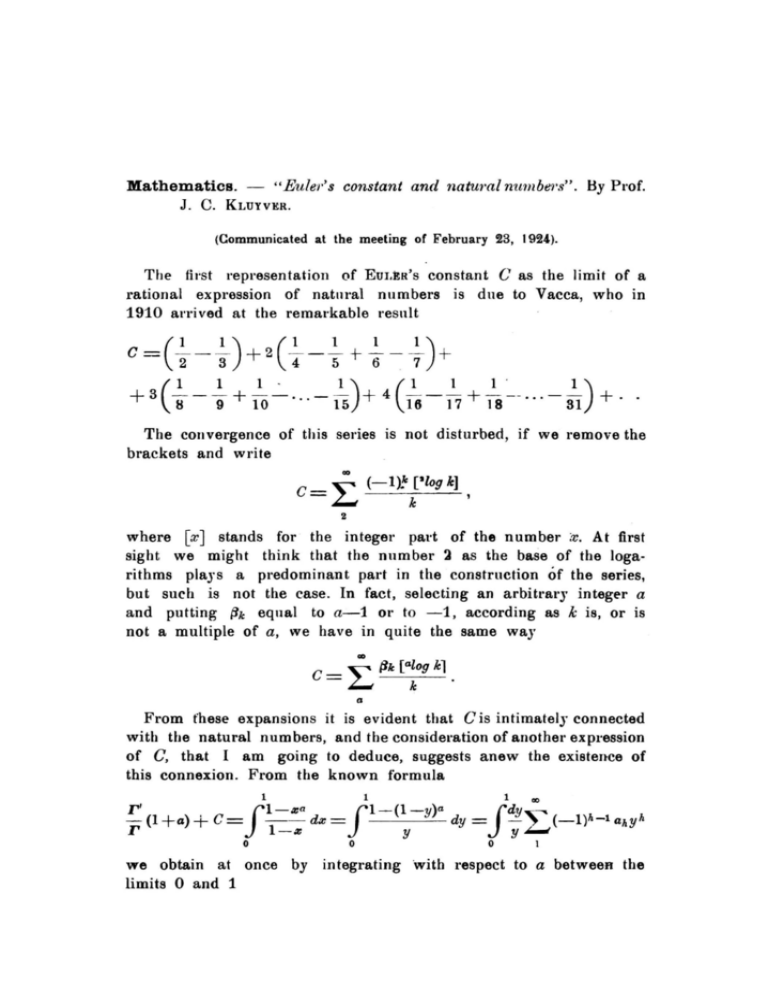
Mathematic8. J. C.
"Euler's constant and natw'al nUlllbe1's". Hy Prof.
KLUYVER.
(Communicated at the meeting of February 23, 1924).
The Ih'st representation of EUI.ER'S constant C as the limit of a
rational expression of natural nllmbers is due to Vacca, who in
1910 alTived at the remarkable resnlt
The cOllvergence of this sedes is not disturbed, if we remove the
brackets and write
where [x] stands for the integer part of the number x, At first
sight we might think that the nllmber ~ as the base of the logarithms plays a pl'edominant part in the construction óf the series,
but sueh is not the case. In fact, selecting an arbitI'ary integer a
and putting {Jk equal to a-1 Ol' to -1, according as k is, or is
not a multiple of a, we have in quite the same way
o
From rhese expansions it is evident that Cis intimately connected
with the natural numbers, and the considel'ation of another expl'ession
of C, that I am going to deduce, suggests anew the existence of
this connexion. From the known formula
1
1
1
ao
r'
-(l+a)+
C= Jl-a:
- - da:= J1-(1-Y)O dy = JdY~---....
- ~ (-1)h-1ahyh
Q
r
o
I-a:
y
0
0
y~
I
we obtain at once by integrating 'w ith respect to a between the
limits 0 and 1
143
.
.-
where the coefticients
Uh
a1'e determined by the equation
1
1
+ ~fa (1 -
ah=<-I)h-fhda =
o
i-)(
1- ~ )(1-~)., {1- hal) da,
0
Otiviously the numbers ah al'e positive and I'ational and it is seen
that the sequence (ah) is decreasillg to the limit zero . In order to
evaillate ah. we observe th at lhe equatioll
1
J I - y)a da
o
=
=1-
y 1
log - -
.
:l:.
ah yh
l-y
leads to the identity
1
=
(1 - L~ ah , ) ,.,...
lJh
1
Hence the coefficients
1
ah
'fii.":..... yh-l
~
- h- •
1
are found fl'om the equations
a,
2-1'
As the sequence (a,,) is decl'easing, we must have
1
ah
1
< (h+l) (11 + 21 + 31 + .. , + h1) < h log lt'
therefore we conclude . that the terms of the somewhat irl'egular
expansion
.. .. ah
1
1
1
19
3
868
271)
C=
h =2 + 24 72 2880 800 362880 + 169844 +.,.
I:
1
+ +
+
+
144
co
al'e less than the cOl'respollding lenns of the series 2
1
-~ ~~
. lts
"Sjog lt
but it co rt\'eI'ges mOl'e rapidly than
2
convel'gence may be slow,
Vacca's expansion,
Tilt> above I'esnlt ean be put into another form. Writing
. (al- + - + a,- +.,'+-,
ah)
ti.
C=Llm
h=«>
1
2
3
"
and joining this eql1at.ion to the equations satisfied' by the coefficients ah, we obtain by sol ving fol' C
o
1
1
1
1
3
h=co
1
i
3
h
o
o
o
o ...
0
1
~ -
1
2
1
1
-
4
2
1
2
I·
1
-
--
C = ~ Lim
1
1
-
3
-
2
1 ...
0
1 1
1
1
h+l h h-l 1t-2 ,"
1
1
and thus we have again deduced a I'ational expression of the natUl'al
Ilumbers, lhat converges to lhe mystel'Ïous constant C,
Fot' pUl'poses of Ilurnel'ical compl1tation these expansions of Care
not convenient, and a more serviceable relation is obtained as follows.
If we integl'ate with respect to a between lhe limits 0 and 1
both sides of the eql1ation
= Jd- Y
py
1
r' + Il + I)
-(a
r
+C
o
(l-y}t.<I+
f
1
dy IGO (-1)h-1ak yh-l(1 -y)-''',
1
0
we will find
co
1
1
1
C= ( 1+2+3+'"
1)
+;
~....
ah
-log(ll+ 1) I- r(1 +Il) ~lt(lt+ 1)(h+2), .. (h+Il)'
1
Now in this expa.nsion a.1l irrational term oeel\l'S, but taking 1'01'
instance Il = 5, this fOl'ml1la gives the numerieal value of C with
toierabie accul'aey by using only the fil'St six terms of the series
at the l'ighthandside,
